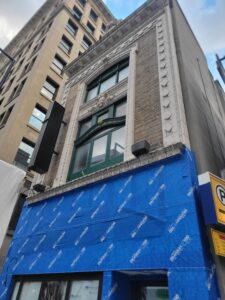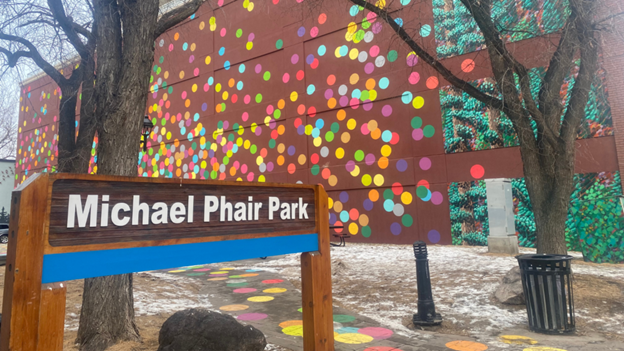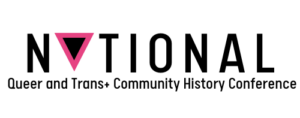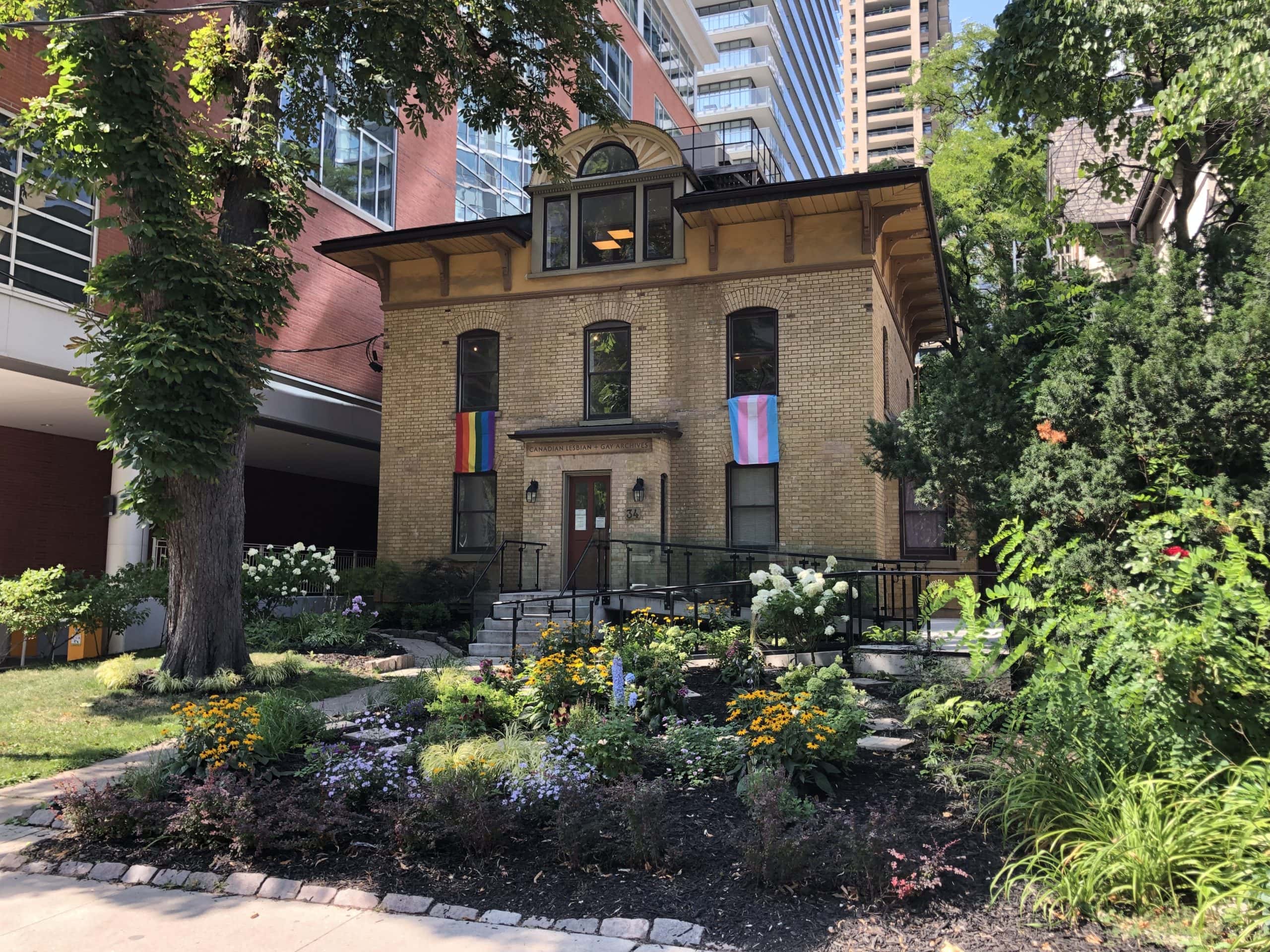Representing Queer Histories through the National Trust’s Historic Places Days
The summer of 2023 marked the seventh year of the National Trust’s Historic Places Days (HPD), a platform for individuals and organizations to showcase the places and stories important to them in their own words. 2023 also marked the National Trust’s launch of a new initiative: Queering the Historic Places Days (QHPD), a project designed to contribute to the mapping of histories and experiences of Queer communities, across this place known as Canada.[i]
Inspired by the Montreal-based but now internationally recognized “Queering the Map” project, the QHPD initiative capitalized on the existing platform of Historic Places Days to connect stakeholders, including organizations, authors, historians, and community members to share Queer place-based histories in their own words. By July, 30 sites centering 2SLGBTQIA+ history were listed among the 800+ historic sites participating in HPD 2023.
Mapping Queer Histories

The ArQuives: Canada’s LGBTQ2+ Archives
“LGBTQ2+ queer histories and spaces have been invisible and hidden for years. At times from LGBTQ2+ communities as much as those from outside the community. As many of these spaces change and disappear, it is essential to map out these places to show how LGBTQ2+ history remains a part of our everyday lives. “–Raegan Swanson, Executive Director of the ArQuives, Toronto, ON.
Too often, historic spaces of significance, whether historic homes, neighborhoods, parks, etc. stand without acknowledgment of their layered and diverse histories. Many do not stand at all, having long been demolished. From targeted gentrification to demolition by neglect and lack of heritage protection to lack of public visibility, the place-based histories of diverse communities across this place now known as Canada are often rendered invisible.
In representing Queer histories, one not only has to contend with the inequality of heritage conservation and public visibility but internal influences on visibility as well. “Queer spaces are often ephemeral. Lesbian bars, queer bookstores, cruising parks, and gay dances, to name but a few examples, were historically transitory spaces, ready to be uprooted at any moment. This was due in part to necessity, in order for the community to protect itself from police violence and societal repression. Indeed, this very violence continuously shaped queer community spaces, forcing them to close, to change, to disappear,” observes Chris Marie-Cantwell, assistant archivist for the Archives Gaies du Québec. “Queer place-based histories can thus be difficult to form, as we rarely find evidence of continuity.”
Indeed, as Marie-Cantwell observes, there is a distinct invisibility of the histories of these Queer spaces, even within geographic regions such as Montreal, that have received comparatively more historical attention to the history of 2SLGTBQIA+ communities.
Examples of this invisibility include sites such as 1422 Peel Street, known as PJs between 1960-1980s, a cabaret and public space for Queer celebration, organized by Queer activist and drag icon, Armand Monroe (La Monroe), during a time when homosexuality was highly criminalized. Today, the building sits vacant in downtown Montreal with no indicator of its historical significance to the Queer community

Photo of 1422 Peel Street taken in June 2023
A similar case can be said for the former location(s) of Librarie L’Androgyne, the first Queer bookstore in Montreal, founded in 1973, or the location of Truxx and le Mystique, neighboring gay bars on Stanley Street, the location of what is often referred to as Montreal’s Stonewall: where on October 21, 1977, the bars were raided by fifty heavily armed policeman, arresting 146 men. Community outrage led to an enormous protest of over 2,000 people, inciting the Quebec national assembly to amend the Quebec Human Rights Charter to include sexual orientation as a prohibited form of discrimination on December 15, 1977.[ii]
This lack of visibility is not unique to Montreal. Britt Bauer, author of the Historic Queer Winnipeg Walking Tour, writes “These are buildings that we walk or drive past every day, and yet we are unaware of the layered histories of these places, and the memories that inhabit them. These histories have been concealed, and the information that is accessible to the public is scattered and fragmented.” Bauer’s ongoing mapping project identifies 32 sites that help tell the story of 2SLGBTQIA+ histories within the city of Winnipeg.
Mapping projects, like Bauer’s, have grown in number in recent years, in part to tackle the problem of representation in regard to place-based Queer histories. Taking on different forms, from purely digital programming to physical maps, to curated walking tours, historians, Queer-focused organizations, and invested community members work to make these histories visible, across the country. Many of these projects rely on archival sources and the accounts of community members to construct these place-based histories. As Marie-Cantwell writes, “Mapping historically queer spaces by using evidence from archives and oral histories allows us to cement a history, a connection to the past, that has traditionally been denied to the queer community. It allows us to claim spaces in the urban geography, but also in the historical geography of the city, the province, the country — affirming that queerness has indeed, always been here.”

Michael Phair Park, Edmonton, AB. Photo Credit: Michael Phair Park. Photo provided by the Edmonton Queer History Project.
The Role of QHPD
The Trust’s initiative of “Queering the Historic Places Days,” provides a national platform to connect the work being done to map the histories of Queer communities. By July of 2023, 30 Queer place-based histories were listed on the Historic Places Days website, demonstrating a temporal and geographic breadth and promoting diversity to places already represented in the program. Some listings commemorate acts of protest and resistance such as the Jury Room bar, the site of the second known Lesbian, Gay, and Bisexual Picket in Halifax, NS, which was listed by Rebecca Rose, author of Before the Parade: A History of Halifax’s Gay, Lesbian, and Bisexual Communities (1972-1984). Others recognize spaces that have served as resource centers for Queer communities for decades, such as the Rainbow Resource Centre in Winnipeg, Canada’s longest continuously serving Queer and Trans community centre. Others, from Lesbian bars to bookstores, represent the multi-faceted lives of the Queer community across time and space.
Underscoring the importance of Archives to the representation of place-based Queer histories, three Archives were also listed through the QHPD initiative: The ArQuives in Toronto, the Archives Gaies du Québec, and the Two-Spirit Archives at the University of Winnipeg.

Photo Credit: University of Winnipeg Archives/Two-Spirit Archives
“One of our goals with the Two-Spirit Archives is to centre Two-Spirit people in Canadian history and to increase their visibility in our documentary heritage. Historic Places Days created opportunities to share the vitally important stories found in the Two-Spirit Archives with a larger audience,” writes University Archivist, Brett Lougheed, “the inclusion of the Two-Spirit Archives as an HPD site also provided validation that Two-Spirit history is of national significance, not only in the telling of queer histories, but in the telling of Indigenous history and Canada’s ongoing struggles with colonization and reconciliation. This validation of Two-Spirit history can assist in building a sense of belonging within the community by recognizing the existence of Two-Spirit people throughout time despite the colonial aims of their erasure.”
With the continuation of Historic Places Days, the Trust hopes to expand upon existing partnerships and increase the number of listings into the new year. Acknowledging the unequal representation of perspectives within Queer history, the Trust aims to better represent the diversity of identities, paying attention to the intersections of race, gender, and class to Queer representation. Attention will also be paid to listing place-based histories outside of big cities. As Valerie Korinek writes in her book Prairie Fairies: A History of Queer Communities and People in Western Canada, 1930-1985, “Queer social histories are not only urban, coastal, and metropolitan but also Midwestern and southern, rural and small town.” [iii]
In May, the National Trust joins several of it’s QHPD collaborators in supporting the National Queer and Trans+ Community History Conference, taking place on May 3-4, 2024, at MacEwan University in Edmonton, Alberta. This conference will “bring together 2SLGBTQ+ community members, non-profit organizations, heritage professionals, historians, academics, emerging scholars, and students, who have an interest in documenting, preserving, and celebrating diverse and intersectional queer and trans+ histories in Canada.”

The conference, like QHPD, underscores the importance of Queer representation in history, at a time when Queer identity is increasingly under threat. As Dr. Kristopher Wells, Canada Research Chair for the Public Understanding of Sexual and Gender Minority Youth, at MacEwan University, puts it “With hate crimes increasing across Canada, queer histories are now more important than ever. 2SLGBTQ+ communities have always been a vibrant and important part of Canadian society. By sharing our stories and histories, we are helping to make invisible lives visible in an attempt to honour the past and build a more inclusive future.”
[i] We have chosen to use the term “Queer” deliberately to emphasize the diverse and intersectional identities within 2SLGBTQIA+ communities. Today the term “Queer” is used as both an identity and an umbrella term. Among historians, “Queer” can be similarly used to address the dynamic nature of 2SLGBTQIA+ identity through a historical lens. We recognize, however, that the term “Queer” is not universally accepted and continues to be a harmful word to many. If you have any concerns or suggestions, please do not hesitate to reach out to us by email: (agray@nationaltrust.ca). This is an ongoing project and we appreciate any feedback you might have.
[ii] Burnett, Richard. “History of Queer Montreal Walking Tour: 1648 to 2018.” Three Dollar Bill, June 21, 2017, http://bugsburnett.blogspot.com/2017/06/brief-history-of-queer-montreal-and.html
[iii] Valerie J. Korinek, Prairie Fairies : A History of Queer Communities and People in Western Canada, 1930-1985 (University of Toronto Press, 2018), 7.


